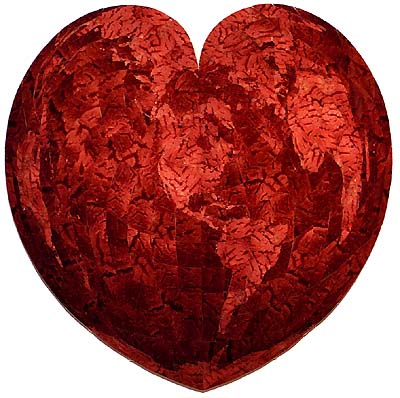Joseph Nechvatal: Immersion Into Noise (2011)
Filed under book | Tags: · architecture, art, art history, cognitive science, music, music history, noise, sound recording

“The noise factor is the ratio of signal to noise of an input signal to that of the output signal. Noise can block or interfere with the meaning of a message in both human and electronic communication. But in Information Theory, noise is still considered to be information.
By refining the definition of noise as that which addresses us outside of our preferred comfort zone, Joseph Nechvatal’s Immersion Into Noise investigates multiple aspects of cultural noise by applying the audio understanding of noise to the visual, architectural and cognitive domains. Nechvatal expands and extends our understanding of the function of cultural noise by taking the reader through the immersive and phenomenal aspects of noise into algorithmic and network contexts, beginning with his experience in the Abside of the Grotte de Lascaux.
Immersion Into Noise is intended as a conceptual handbook useful for the development of a personal-political-visionary art of noise. On a planet that is increasingly technologically linked and globally mediated, how might noises break and re-connect in distinctive and productive ways within practices located in the world of art and thought? That is the question Joseph Nechvatal explores in Immersion Into Noise.”
Publisher Open Humanities Press; in conjunction with the University of Michigan Library’s Scholarly Publishing Office, 2011
Critical Climate Change series
Creative Commons Attribution-ShareAlike 3.0 Unported License
ISBN 9781607852414
Author interview: Taney Roniger (Anti-Utopias)
Review: Yuting Zou (The Brooklyn Rail, 2011).
Contd electronic magazine, Nr. 1-2 (1997) [German, English, French]
Filed under e-zine | Tags: · architecture, art, internet, music, net art, radio, sound recording

Electronic magazine edited by luxus cont. (Micz Flor and Martin Conrads).
Sound System / System Sound
Issue 2, September 1997
View online
Sections:
Themenpark with contributions by Ulrich Gutmair, Stupid Octave Cat, Martin Conrads, Paolo Bianchi, Diedrich Diederichsen, Drew Hemment, Tim Read, Raul Minsburg.
Panoramabus with contributions by Ralf Boent, Carl-Johan Vallgren om Arnolt Bronnen, Benjamin Beck.
LuxusLiner with contributions by Martin Conrads, Josephine Berry.
Contemporary Cartographies
Issue 1, February 1997
Within Hybrid Workspace event at Documenta X, Kassel.
View online
Sections:
Themenpark with contributions by Josephine Berry, Christophe Charles, Martin Conrads, Renée Green, Christophe Gougeon, Raphaële Jeune, jodi.org, Frédéric de Lachèze, Yannick Liron, Geert Lovink, Christophe Marchand-Kiss, Jean-Charles Masséra, Sam Rose, Pit Schultz, McKenzie Wark, Ruth Watson.
Panoramabus with contributions by Ulrich Gutmair, Kathrin Röggla.
LuxusLiner with contributions by Josephine Berry, Ulrich Gutmair, Martin Conrads.
De Stijl magazine (1917-1921) [Dutch]
Filed under magazine | Tags: · architecture, art, art criticism, art theory, avant-garde, de stijl, literature, neoplasticism, painting, poetry

De Stijl, Dutch for “The Style”, also known as neoplasticism, was a Dutch artistic movement founded in 1917. In a narrower sense, the term De Stijl is used to refer to a body of work from 1917 to 1931 founded in the Netherlands. De Stijl is also the name of a journal that was published by the Dutch painter, designer, writer, and critic Theo van Doesburg (1883–1931), propagating the group’s theories. Though the magazine never sold more than 300 copies, it had a strong influence on art in the Netherlands and abroad.
De Stijl: Maanblad gewijd aan de moderne beeldende vakken en kultuur
Edited by Theo van Doesburg
Published in Delft (1917-18) and Leiden (1918-21)

